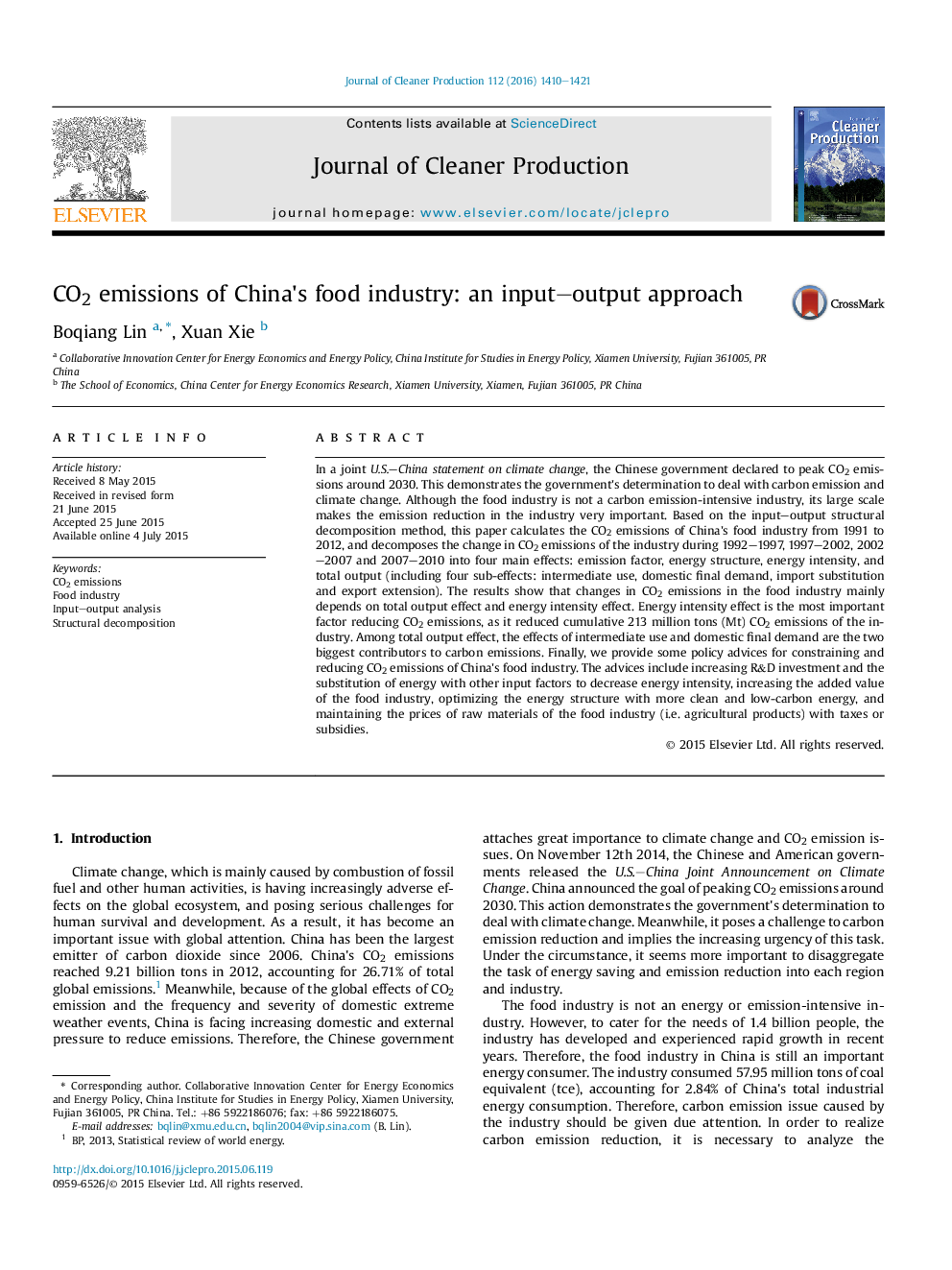| کد مقاله | کد نشریه | سال انتشار | مقاله انگلیسی | نسخه تمام متن |
|---|---|---|---|---|
| 1744314 | 1017973 | 2016 | 12 صفحه PDF | دانلود رایگان |

• The CO2 emissions of China's food industry have been calculated.
• The change in CO2 emissions of the industry from 1991 to 2012 has been decomposed into seven kinds of effect.
• The change in CO2 emissions in the food industry mainly depends on total output effect and energy intensity effect.
• Some policy advices for constraining and reducing CO2 emissions of China's food industry are provided.
In a joint U.S.–China statement on climate change, the Chinese government declared to peak CO2 emissions around 2030. This demonstrates the government's determination to deal with carbon emission and climate change. Although the food industry is not a carbon emission-intensive industry, its large scale makes the emission reduction in the industry very important. Based on the input–output structural decomposition method, this paper calculates the CO2 emissions of China's food industry from 1991 to 2012, and decomposes the change in CO2 emissions of the industry during 1992–1997, 1997–2002, 2002–2007 and 2007–2010 into four main effects: emission factor, energy structure, energy intensity, and total output (including four sub-effects: intermediate use, domestic final demand, import substitution and export extension). The results show that changes in CO2 emissions in the food industry mainly depends on total output effect and energy intensity effect. Energy intensity effect is the most important factor reducing CO2 emissions, as it reduced cumulative 213 million tons (Mt) CO2 emissions of the industry. Among total output effect, the effects of intermediate use and domestic final demand are the two biggest contributors to carbon emissions. Finally, we provide some policy advices for constraining and reducing CO2 emissions of China's food industry. The advices include increasing R&D investment and the substitution of energy with other input factors to decrease energy intensity, increasing the added value of the food industry, optimizing the energy structure with more clean and low-carbon energy, and maintaining the prices of raw materials of the food industry (i.e. agricultural products) with taxes or subsidies.
Journal: Journal of Cleaner Production - Volume 112, Part 2, 20 January 2016, Pages 1410–1421